Illinois Issues: Sacred Buildings In An Age of Decline
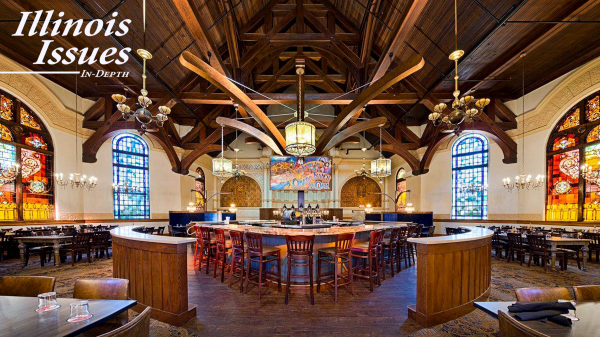
The interior of Obed and Issac's Peoria, a restaurant built inside a converted Presbyterian church John Muchow
A growing number of Illinois church congregations are being forced to make a once-unthinkable decision: either change locations or disband altogether. But moving out doesn’t always mean the end.
In the city of Jacksonville, about 40 minutes west of Springfield, an unassuming, red brick church sits on a corner lot of a residential neighborhood. Lots of towns have them, but this one is different.
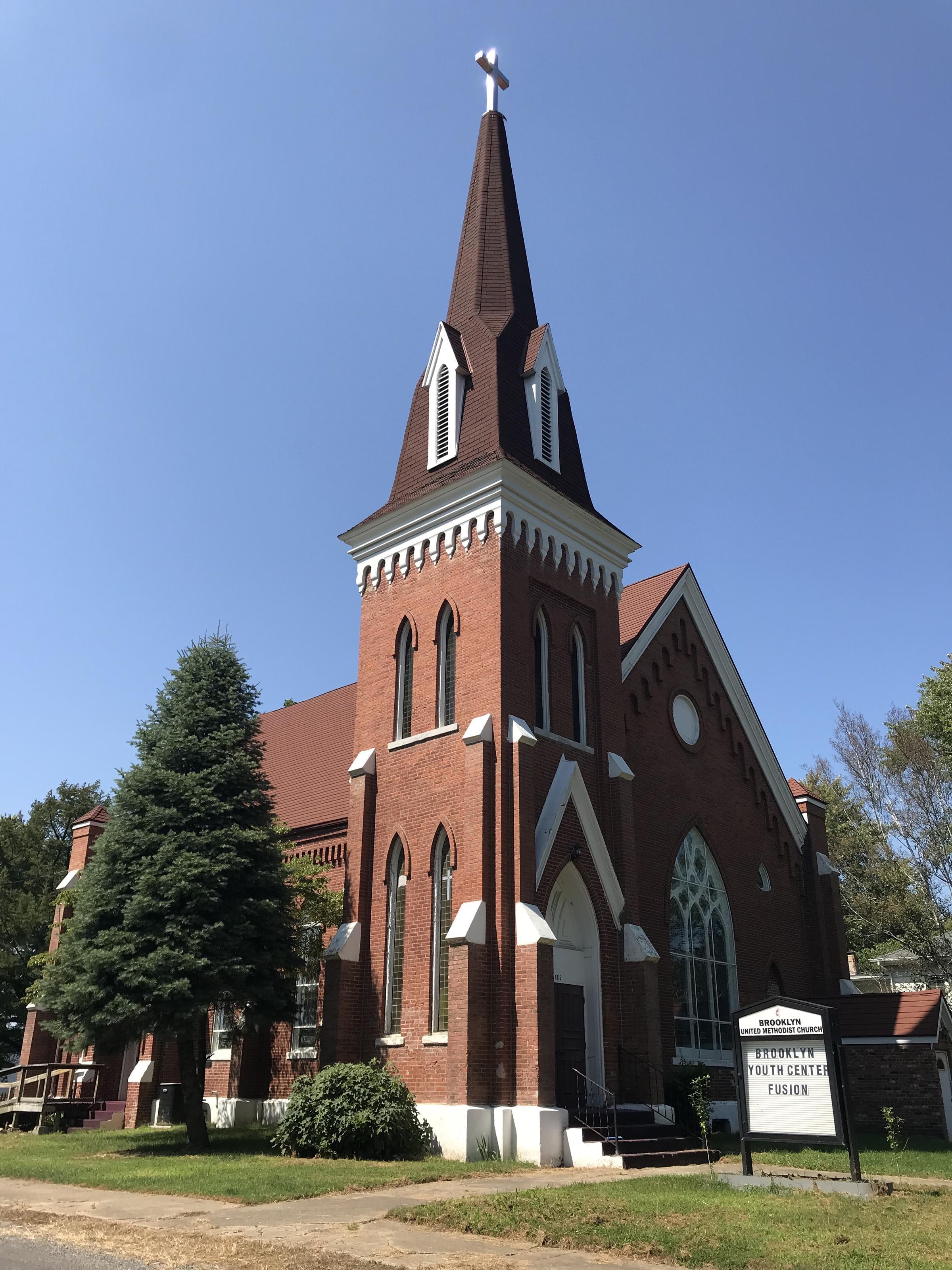
The Brooklyn United Methodist Church in Jacksonville in Sept. 2019. At right, a sign has been changed to reflect the youth group that now meets there.
The church is the Brooklyn United Methodist Church, which was founded in 1866 and held its last service as an active church in 2017.
The minister who was in charge of the place for a while, Jean Hembrough, is now retired. She remembers the Jacksonville church for what it was, and what it had become.
“Brooklyn’s nickname has always been “The Little Church with the Big Heart,” and that really was just so, so true," she recalled.
She reminisced about the people who once sat in these pews. They worshipped, they volunteered, they cooked big pots of a stew dish called burgoo. But a lot of factors combined over the years and lead to the smaller church’s closure. Members were aging faster than youth could replace them, and maintenance costs for the building soared.
By the time the church closed, it had an average Sunday attendance of between 10 and 15 people. For context, Centenary United Methodist Church, elsewhere in Jacksonville, has a congregation at least 10 times that number.
Hembrough says she’s specially trained to deal with church closures, but doing it wasn’t easy.
“It was somewhat of a heartache, as everybody could see that the church was declining and that eventually it would probably have to close, and that was very difficult."
But even though its last service was held two years ago, life has gone on for the Brooklyn United Methodist Church. It’s now used as a youth ministry center for another church in Jacksonville.
Kevin Hinkle and his wife are in charge. He said he can already see the good influence the old building is providing to the kids who participate.
“That’s what we want to be, and we have this to be able to do that,” he said.
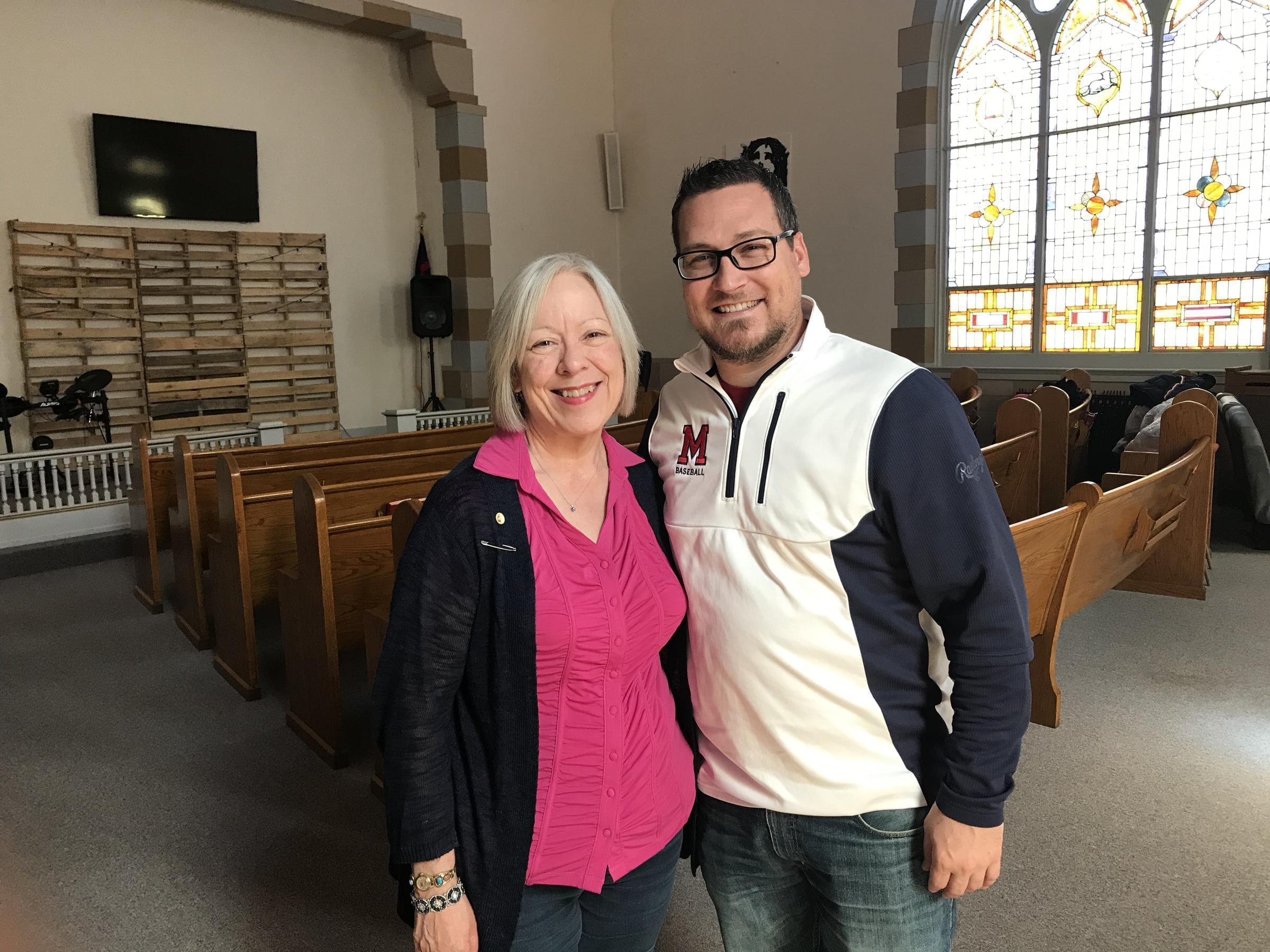
From left, Jean Hembrough poses with Kevin Hinkle inside the old Brooklyn United Methodist Church in Sept. 2019.
This “tale of two churches” scenario has been playing out all over Illinois, and around the country.
It’s true: houses of worship from southern Illinois to Chicago have been shuttering. Even the state's oldest Jewish synagogue, located in Quincy, had to shut its doors. National studies have shown church membership has fallen by 20 percent in the last few decades.
But when a congregation leaves, a sacred building’s story may be only just beginning. Bob Jaeger, President of the non-profit Partners for Sacred Places, said he sees it happen all the time.
“So even though they may be shrinking, many of them are, that doesn’t necessarily mean they’ll end up closing," he explained.
Jaeger has been working with houses of worship for 30 years, and has seen the changes firsthand. He says plenty of people still feel a connection to a higher power; they’re just not parking themselves in a pew each weekend.
The kind of family of people who care about these places can still grow. It may not always be someone sitting in a pew on Sunday morning."Bob Jaeger, Partners for Sacred Places
Research backs him up on that. Pew Research Center data shows 27 percent of Americans consider themselves “spiritual,” up nearly 10 percent from 2012.
There are also similar factors affecting congregations nationwide: old or dying members, a shift in population, and high building upkeep costs.
But while fewer people are attending worship services, Jaeger explained there's a growing movement to keep sacred buildings a part of the community, even if it’s in a different form.
“The kind of family of people who care about these places can still grow. It may not always be someone sitting in a pew on Sunday morning," he said.
Jaeger’s counterpart at the National Fund for Sacred Places, Chad Martin, agrees. He said there is plenty of opportunity in what may seem like a dismal situation.
“When religious life is changing and the ways that people connect with each other on a human level is changing, is there a way for these buildings to continue to be seen as real icons of the community?” he mused.
Martin's idea is at the center of a movement to repurpose, rather than demolish, churches that close their doors.
To see this movement in action, just visit downtown Springfield.
At a busy intersection in the city's downtown, a round limestone and brick church building was repurposed earlier this year. It’s where Springfield's First United Methodist congregation once met. But now it’s an apartment building, and the headquarters of the Springfield Area Chamber of Commerce.
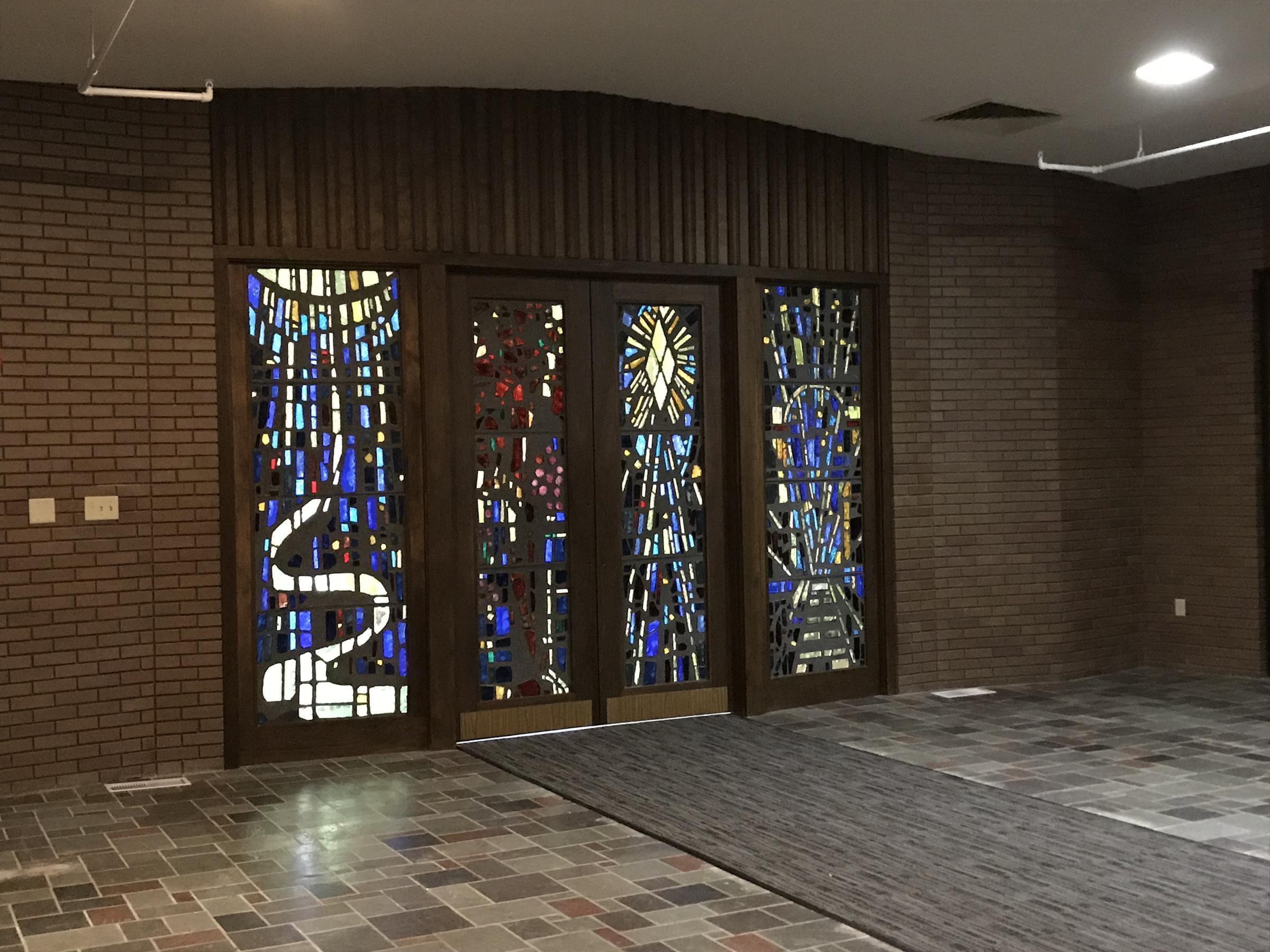
Stained glass from the chapel in the old Springfield UMC building still stands today. The chapel has been re-purposed into a community center for the residents of the apartment building that was once the church's education center.
Chris Hembrough, who runs the Chamber, was offering tours (no relation to Jean Hembrough, mentioned above).
Elements of the old church were everywhere: much of the original stained glass was retained, with new carpeting to match. The original doors and features from the sanctuary are still there.
Even the original chapel was left intact.
Hembrough said he’s happy the project's developer did two things at once.
“They wanted to see that it maintained some of the integrity of the facility, but secondly that the facility was repurposed and in use again, rather than sitting here empty as it had for the last ten years," he said.
Hembrough believes the building's potential impact on the community is much greater now that it's occupied.
“It [the church] could address the need for additional residential units, but it could also be a catalyst for further re-investment in downtown Springfield.”
And as for the Methodist congregation that had moved out? They’re still around on Springfield’s west side, boasting around 1,100 average weekend attendees and an 89,000 square foot complex.
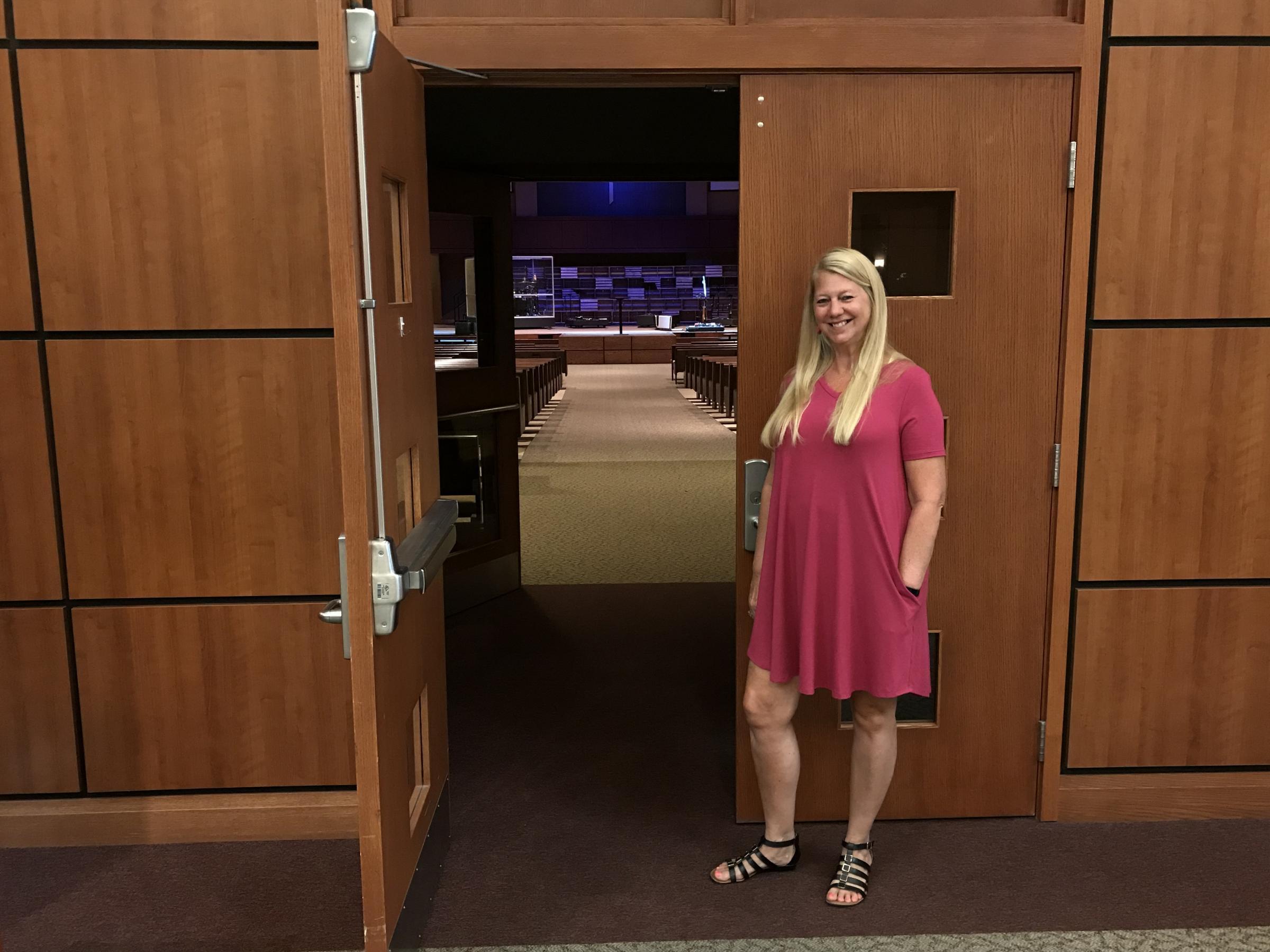
Sharon Sweeney stands outside the main sanctuary at Springfield's First United Methodist Church, now located on the city's west side.
Sharon Sweeney is the Director of Connections there. She says while some members still pine for the old place, she’s happy it’s no longer sitting empty.
“If this is something that can give it life, and bring the community together downtown, I was all for it,” she said.
Springfield’s church project is just one of many. In Peoria, Conn’s Hospitality Group went to work repurposing a church-turned Masonic Hall into a restaurant, a sort of “beer church," known as Obed and Issac's Peoria.
CEO Karen Conn says her team has repurposed old buildings for more than twenty years. The Peoria church, originally built for a Presbyterian congregation in 1909, had changed hands several times and was once saved by the community from being torn down.
By the time the Conns found it, it hadn’t been touched in nearly five years.
“If it’s not for somebody like us that’s half-crazy to take on a structure this large, chances are that there could be a strong possibility that it would have been demolished," Conn said.
Cort Conn, her husband and partner, said the church still serves its community as a gathering venue.
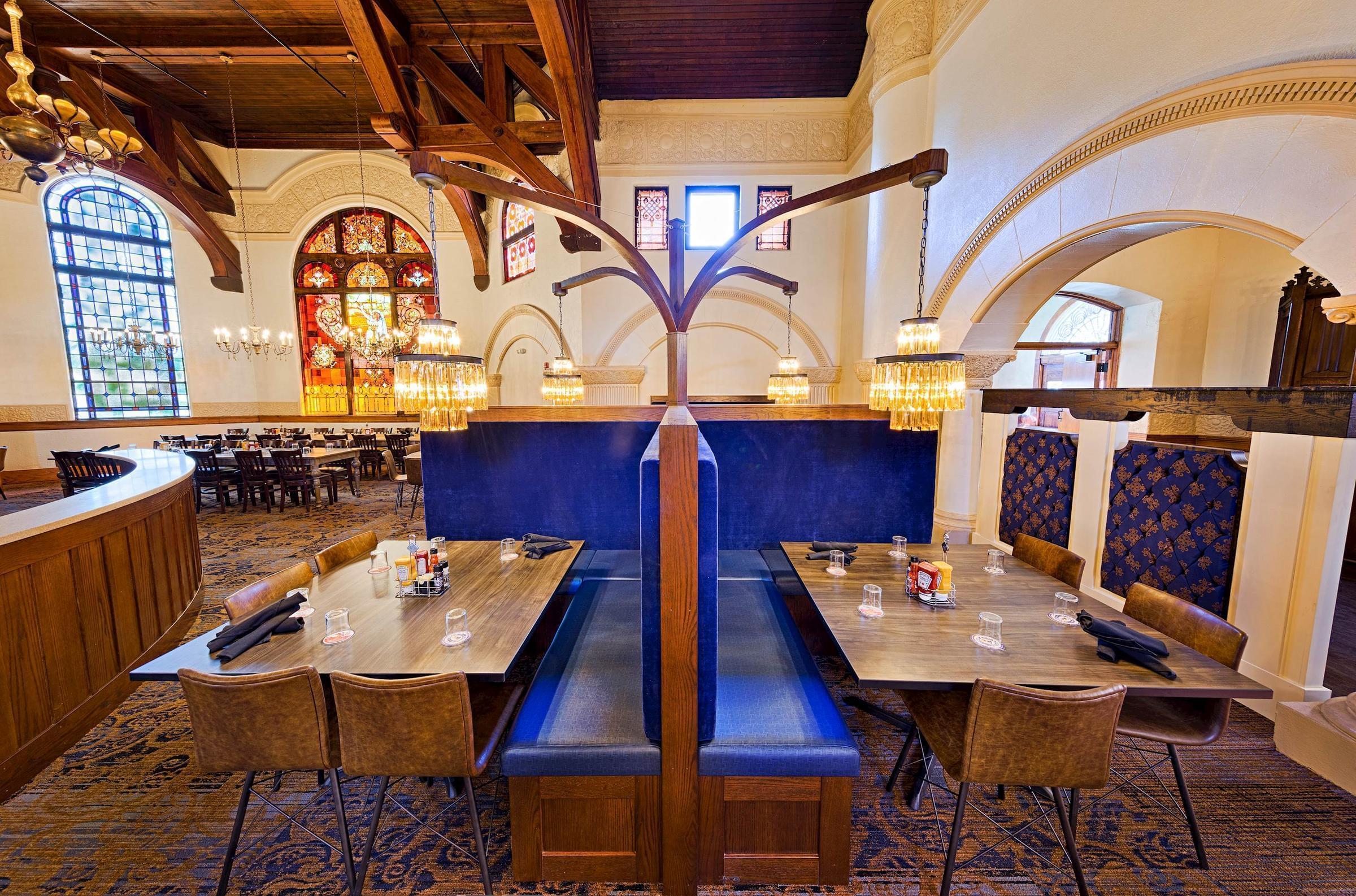
The interior of Obed and Issac's Peoria, originally a Presbyterian Church.
"People come to...Obed and Issac's not just for the good food and service; they come for the experience. [They say] 'I just saw the coolest restaurant in an 127 year-old church,' and they come back and talk about it," he explained.
It’s easy to look at the decline of sacred places through a lens of good or bad, but folks close to the matter say otherwise.
Back at the Brooklyn Methodist Church, Jean Hembrough said she's pleased the congregation made the decision to hand the building over to someone else, even though it was bittersweet.
"[They] grabbed ahold of a new vision for a building...that could be repurposed to make a different kind of ministry happen," she said.

Chad Martin explained two things that can be true at once when a sacred building closes:
“A congregation can totally exist without a building, and as you’re seeing, the buildings can have a life of their own that exists well beyond the life of the congregation.”
Links
- Illinois Issues: Alaina Hampton On Life After Speaking Out
- Illinois Issues: Charlie Wheeler On The Past And Future Of Statehouse News
- Illinois Issues: TIF—The Swiss-Army Knife Development Tool
- Illinois Issues: Minority Companies Get Fewer Loans Than White Peers — Is That Racism?
- Illinois Issues: Lack Of Options Sends Special Students Across State Lines
- Illinois Issues: Carbondale’s 2020 Census Creates Concern

